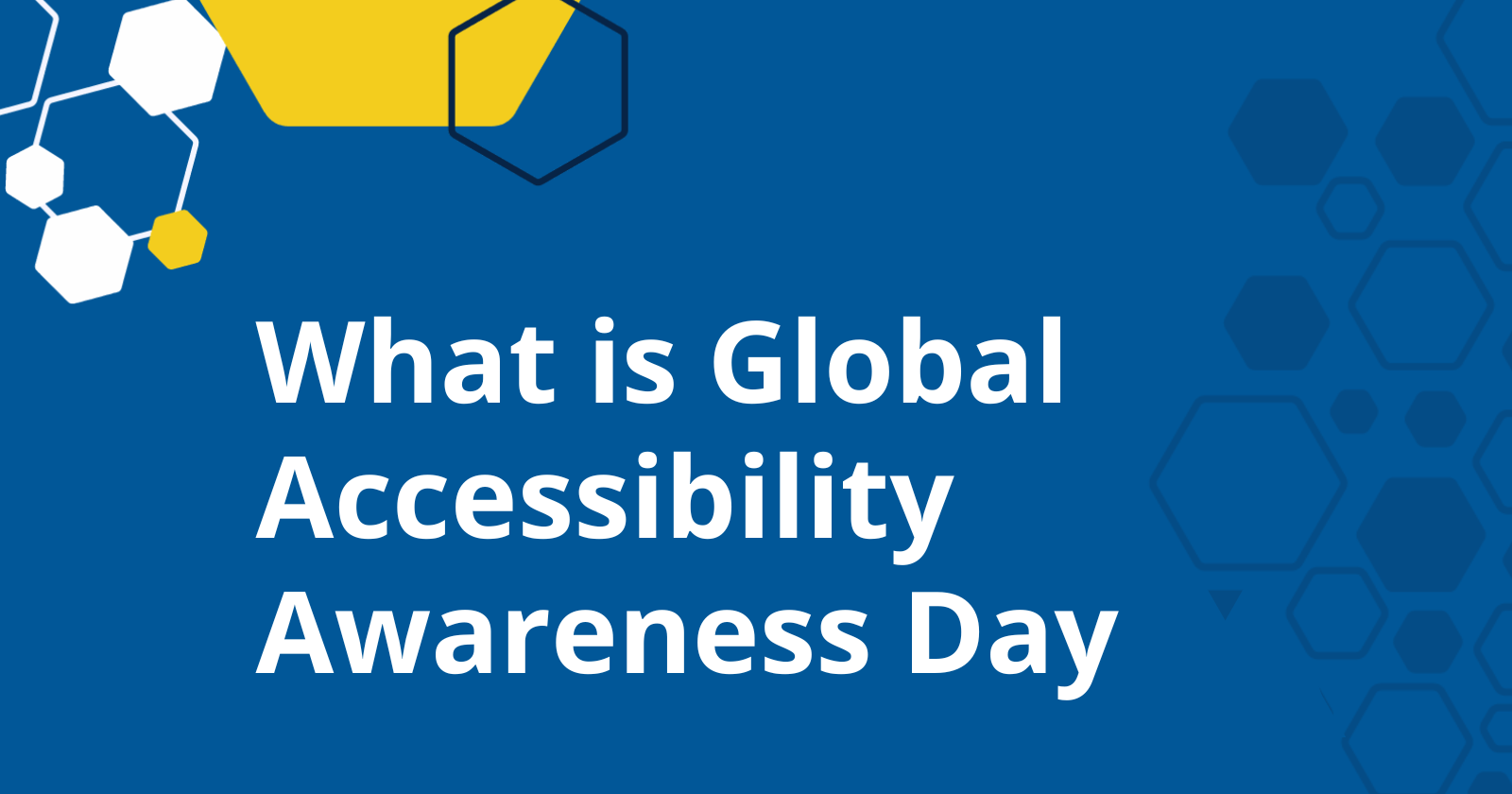
Join us as we celebrate Global Accessibility Awareness Day (GAAD) and discover how web accessibility transforms the digital landscape, fosters inclusivity, and empowers millions of users worldwide.
In this blog post, we’ll explore the importance of Global Accessibility Awareness Day (GAAD), highlight key accessibility considerations, and highlight your role in creating a more inclusive online environment.
What is Global Accessibility Awareness Day (GAAD)
Global Accessibility Awareness Day (GAAD) is a significant event that has been observed on the third Thursday of May since 2012. It draws attention to the importance of digital accessibility worldwide.
This year, on May 16, 2024, we come together once again to celebrate GAAD, shedding light on the necessity of inclusivity in the digital landscape. From its humble origins to its current global recognition, GAAD has become a driving force in advocating for accessibility in the online world.
The Beginning of GAAD
In 2011, a Los Angeles-based web developer named Joe Devon wrote a thought-provoking blog post titled “CHALLENGE: Accessibility know-how needs to go mainstream with developers. NOW.” The post served as a wake-up call to the lack of awareness and appreciation for accessibility among web developers.
Devon’s realization was sparked by witnessing a screen reader demonstration, which opened his eyes to the possibilities of accommodating technology. It was a moment that changed his perspective and fueled his determination to address the missed opportunities for accessibility.
Devon’s frustration grew when he experienced firsthand how his elderly father faced barriers to accessing essential services, such as support at his bank. Motivated by these encounters and his newfound understanding, Devon proposed the idea of a Global Accessibility Awareness Day. He called for a day when web developers worldwide would come together to raise awareness and knowledge about making websites accessible.
Shortly after Devon’s blog post, Jennison Asuncion, an accessibility advocate from Toronto, stumbled upon it through a tweet. Recognizing the potential impact of Devon’s idea, Asuncion reached out to him, and together, they embarked on a mission to turn the concept into a reality.
With their combined professional networks and dedication, they gathered the necessary resources and successfully launched the first GAAD in 2012. Since then, Joe Devon and Jennison Asuncion’s shared vision has transformed GAAD into an annual event that continues to thrive.
The Purpose of GAAD
GAAD has a clear purpose: to encourage discussions, reflections, and learning about digital access and inclusion for over one billion people worldwide who live with disabilities or impairments.
It serves as a platform to emphasize the significance of accessibility in the web, software, mobile applications, and other digital realms. By spotlighting the experiences of individuals with disabilities and showcasing assistive technologies, GAAD aims to foster a deeper understanding among technology creators and users.
Every year, GAAD sparks local and virtual events and activities that exemplify how people with disabilities navigate the web and digital products using assistive technologies. It also prompts discussions about integrating accessibility considerations into the development process, ensuring that the needs of diverse users are considered.
Why Accessibility Matters
Accessibility is not just a buzzword; it is a fundamental aspect of digital development that has a profound impact on individuals and society as a whole. Let’s explore why accessibility matters and how it shapes the online experience for millions of users. By highlighting key reasons why accessibility should be a top priority, we’ll delve into its impact on individuals and society.
The digital realm is a gateway to information, services, and opportunities. However, without proper accessibility measures in place, a significant portion of the population is excluded from fully participating in the online world. Accessibility ensures that individuals with disabilities or impairments can navigate and engage with digital content, fostering inclusivity and equal opportunities.
Creating Equal Opportunities for All Users
Accessibility is not just a buzzword; it is a fundamental aspect of digital development that has a profound impact on individuals and society as a whole.
The digital realm is a gateway to information, services, and opportunities. However, without proper accessibility measures in place, a significant portion of the population is excluded from fully participating in the online world. Accessibility ensures that individuals with disabilities or impairments can navigate and engage with digital content, fostering inclusivity and equal opportunities.
Legal and Ethical Considerations
Accessibility is not only a moral obligation but also a legal requirement in many jurisdictions. Numerous countries have enacted legislation, such as the Americans with Disabilities Act (ADA) in the United States, the Accessibility for Ontarians with Disabilities Act (AODA) in Ontario, Canada, and the European Accessibility Act. These laws mandate that digital content and services be accessible to individuals with disabilities.
Failure to comply with accessibility regulations can result in legal consequences, including lawsuits, fines, and damage to a company’s reputation.
Web accessibility lawsuits have played a significant role in raising awareness and emphasizing the importance of inclusive digital experiences. Several notable cases have resulted in landmark decisions and shaped accessibility standards. Let’s take a look at a few examples:
- National Federation of the Blind v. Target Corporation (2006): this groundbreaking lawsuit highlighted the barriers individuals with visual impairments face on websites. The case ended with a settlement, resulting in Target Corporation committing to improve its website accessibility and adopt WCAG guidelines.
- Domino’s Pizza LLC v. Robles (2019): In this case, the U.S. Supreme Court denied Domino’s Pizza’s request to review a lower court decision, stating that the Americans with Disabilities Act (ADA) applies to websites and mobile applications. The ruling reinforced the legal obligation of businesses to ensure digital accessibility.
These lawsuits, among others, have played a pivotal role in shaping accessibility standards and creating a more inclusive digital landscape. They remind us that accessibility is not merely a suggestion but a legal and moral responsibility.
By drawing attention to these legal cases, we recognize the importance of web accessibility and its impact on individuals with disabilities, ensuring they can fully participate in the digital world.
Essential Web Accessibility Considerations
When aiming to create an inclusive online experience, several key accessibility considerations should be at the forefront of web developers, designers, and content creators’ minds. By addressing these considerations, you can ensure that individuals with disabilities or impairments can navigate, perceive, and interact with digital content effectively.
Web Content Accessibility Guidelines (WCAG)
The Web Content Accessibility Guidelines (WCAG) serve as the gold standard for web accessibility. These guidelines provide a comprehensive framework for creating accessible digital content. Key considerations within WCAG include:
- Perceivable content: ensuring that all content can be perceived by users, regardless of their sensory abilities. This includes providing alternative text for images, video captions, and multimedia audio descriptions.
- Operable elements: making interactive elements and navigation components operable for users. This involves designing accessible forms, providing keyboard accessibility, and implementing clear and consistent navigation structures.
- Understandable information: Presenting content and functionality in a way that is understandable to all users. This includes using clear language, organizing content logically, and providing instructions and feedback that are easy to comprehend.
- Robust technology: building content compatible with various assistive technologies and future-proofed against technological advancements. This ensures that individuals using different assistive devices can access the content effectively.
Design and User Experience (UX)
Inclusive design and a positive user experience (UX) are vital aspects of accessibility. Key considerations in design and UX include:
- Color contrast and visual design: the website should have sufficient color contrast between text and background to improve readability for individuals with visual impairments or color blindness. Consistent visual design elements should be used throughout the website.
- Responsive and flexible layouts: creating responsive designs that adapt to different screen sizes and devices. This enables users to access content seamlessly on desktop computers, laptops, tablets, and mobile devices.
- Clear and intuitive navigation: design intuitive navigation structures that allow users to explore and navigate the website easily. Well-organized menus, breadcrumbs, and clear calls to action create a smooth user experience.
Assistive Technologies and Their Role in Accessibility
Assistive technologies play a crucial role in enabling individuals with disabilities to access digital content. Key considerations include:
- Compatibility with screen readers: designing websites that are compatible with screen readers, allowing individuals with visual impairments to access and navigate content effectively.
- Keyboard accessibility: ensuring that all interactive elements, menus, and forms can be accessed and operated using keyboard navigation alone. This is important for individuals with mobility impairments who rely on keyboards for navigation.
- Compatibility with assistive devices: designing websites that are compatible with a range of assistive devices, including screen magnifiers, braille displays, and alternative input devices.
By considering these key accessibility factors, we can create digital experiences that are inclusive, user-friendly, and compliant with accessibility standards. Remember, accessibility is an ongoing effort that should be integrated into every stage of the design and development process.
Web Accessibility Resources
There is a wealth of valuable resources available to assist individuals and organizations in creating inclusive digital experiences. Whether you’re new to accessibility testing or an experienced accessibility professional, these resources can empower you to improve the accessibility of your website and make it usable for a diverse range of users.
These resources address several aspects of web accessibility, but they are just the beginning. They serve as valuable stepping stones toward a more inclusive digital landscape. Each resource targets specific challenges and offers unique solutions.
To ensure a truly accessible website, it is recommended that you explore additional resources and stay up-to-date with evolving accessibility standards and best practices. By continually educating ourselves and embracing the principles of universal design, we can make significant progress in creating an online environment that is accessible and inclusive for all users, regardless of their abilities or disabilities.
Accessibility Checker WordPress Plugin
Whether you’re new to website accessibility testing or a trained accessibility tester, Accessibility Checker is an excellent tool for speeding up the identification of accessibility problems across your website. Accessibility Checker has a free version that puts accessibility reports on the edit screen of every post or page so you can identify accessibility problems as you create content and before you hit publish. Accessibility Checker free scans unlimited posts and pages and doesn’t require per-page fees or costly API integrations.
Colour Contrast Analyser
TPGi offers a color contrast checker tool that is completely free. With this tool, you can easily determine the contrast ratio between two colors by using a convenient eyedrop tool. The Color Contrast Analyzer allows you to enhance your content for people with visual impairments such as color blindness and low-vision issues.
WP Accessibility WordPress Plugin
WP Accessibility can help you fix some common accessibility problems on your website. This free plugin, created by WordPress core contributor and accessibility team member Joe Dolson, is intended as a bridge to resolve issues created by less accessible themes or plugins.
Overlay Fact Sheet
The Overlay Fact Sheet is a collaborative effort within the accessibility community to provide a comprehensive resource on overlays. Karl Groves started it with a group of individuals passionate about accessibility. It serves as an open statement offering a concise yet informative overview of overlays, their capabilities, and limitations. Notably, the fact sheet takes a firm stance against the use of overlays.
Web Accessibility Perspectives Videos
Web Accessibility Perspectives Videos are a collection of informative videos that aim to shed light on the impact and advantages of web accessibility. These videos delve into the crucial role that web accessibility plays in ensuring equal access for individuals with disabilities. Moreover, they emphasize that web accessibility goes beyond accommodating specific user groups and actually benefits everyone, regardless of their abilities or circumstances.
Celebrating GAAD
Events and Activities Happening on GAAD
Global Accessibility Awareness Day (GAAD) sparks various events and activities focused on accessibility advocacy and education. You can find a plethora of events on the official GAAD website.
At Equalize Digital, we have the honor to celebrate GAAD with a panel discussion about how different WordPress plugins and theme developers are working to improve and promote accessibility in their products. Find more information and register below.
WordPress Accessibility Showcase for Global Accessibility Awareness Day
In honor of Global Accessibility Awareness Day (GAAD), join us for a conversation about how different WordPress plugins and theme developers are working to improve and promote accessibility in their products.
Representatives from Accessibility Checker, CivicPress, Elementor, Gravity Forms, My Calendar, Popup Maker, and WP Accessibility will share how they are working on accessibility, what they’ve learned along the way, their future goals for accessibility, and resources if you want to learn more about building accessible sites with their products. Following the panel discussion, there will be time for open Q&A.
Whether you use these tools on your websites or are a WordPress product owner who wants to make your products more accessible, this is a GAAD event you don’t want to miss.
This event takes place via Zoom Webinars and is live captioned. You can register via Zoom to attend.
Event Ideas to Celebrate GAAD
- Webinars and workshops: online webinars and workshops are organized to provide insights into accessibility best practices, guidelines, and techniques. These events feature experts who share their knowledge and experiences to help participants understand and implement accessibility effectively.
- Panel discussions and conferences: panel discussions and conferences bring together accessibility professionals, advocates, and industry leaders to discuss important topics, share case studies, and explore emerging trends in the accessibility field. These events provide learning opportunities from diverse perspectives and engage in meaningful conversations.
- Accessibility challenges and hackathons: accessibility challenges and hackathons encourage developers, designers, and innovators to create accessible solutions and address real-world accessibility issues. These events foster collaboration, creativity, and problem-solving in pursuing inclusive technology.
- Awareness campaigns and social media engagement: Various awareness campaigns and social media initiatives are launched on GAAD to reach a broader audience. These campaigns encourage individuals to share their experiences, insights, and resources related to accessibility, using hashtags like #GAAD and #AccessibilityMatters to amplify the message.
Conclusion
Global Accessibility Awareness Day (GAAD) serves as a reminder of the ongoing importance of accessibility in our digital world. By promoting awareness, education, and collaboration, GAAD has become a catalyst for positive change. As we conclude our exploration of GAAD, let’s reflect on two key aspects.
The Ongoing Importance of Accessibility
Accessibility is not a one-time event but an ongoing commitment. As technology continues to evolve, it is crucial to prioritize accessibility in the design, development, and maintenance of digital products and services. By embracing accessibility, we can create a more inclusive and equitable digital landscape where everyone can participate and engage fully.
Web Content Accessibility Guidelines (WCAG) provide a comprehensive framework for accessibility best practices. Compliance with WCAG standards ensures that digital content and applications are perceivable, operable, understandable, and robust for individuals with diverse abilities.
A Call to Action for Creating an Inclusive Digital Future
GAAD reminds us of our collective responsibility in creating an inclusive digital future. It is a call to action for individuals, organizations, and communities to work together and prioritize accessibility in all aspects of digital development.
We encourage individuals and organizations to integrate accessibility into their processes, from the initial stages of design and development to ongoing testing, maintenance, and user feedback. By adopting inclusive design principles, considering diverse user needs, and seeking continuous improvement, we can build digital experiences that are accessible to all.
Let us take this opportunity to advocate for accessibility, not just on GAAD but every day. By fostering a culture of inclusivity and by making accessibility a priority, we can ensure that everyone, regardless of their abilities, can fully participate in the digital world.
As we celebrate GAAD, let’s continue to collaborate, learn, and raise awareness about accessibility. Together, we can create a future where digital experiences are accessible, empowering, and enriching for everyone.
About Equalize Digital
Equalize Digital specializes in WordPress accessibility products and consulting. Our mission is to be a catalyst for positive change on the web and in how we do business, for ourselves, for our employees, for everyone.
Equalize Digital is the proud creator of the Accessibility Checker plugin, the best plugin for accessibility testing WordPress websites. Use it to find accessibility problems during new builds, monitor accessibility, and remind content creators of accessibility best practices on an ongoing basis.
In honor of Global Accessibility Awareness Day, we are offering 25% off all paid Accessibility Checker plans from May 14 to May 23, 2024.

